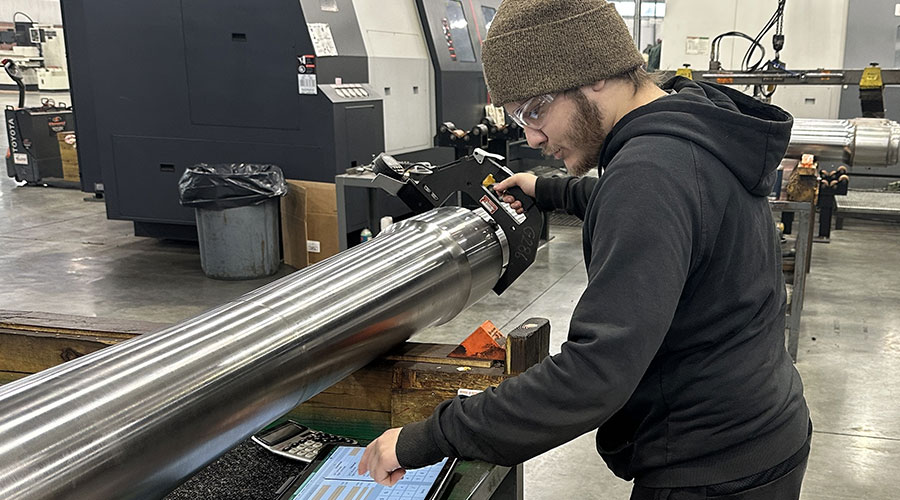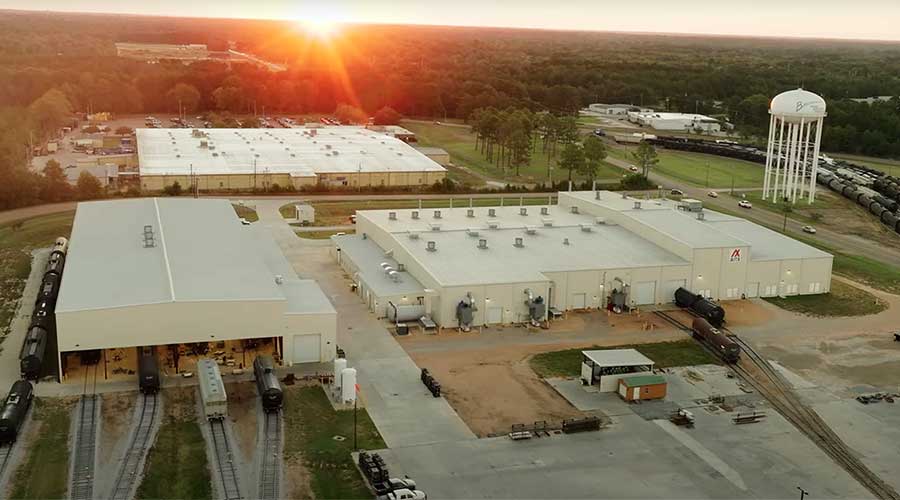Stay updated on news, articles and information for the rail industry
September 2010
Rail News: Mechanical
The rail car market — by Toby Kolstad (September 2010)
by Toby Kolstad
Many reporters, broadcasters and any number of other pundits have asked what the "new normal" for the U.S. economy might be in the coming years. For the railroad industry, the answer to this question may be another question: "Was there ever a period of normal traffic for the nation's railroads?"
The growth of imported containers and the development of the coal-rich Powder River Basin profoundly changed the face of railroading in the West during the past 40 years; railroads in the East have seen major changes during the same period in the traffic patterns of the paper, coal, and steel industries that they serve. When was the last trainload of woodrack flat cars carrying six-foot pulpwood logs sent to a southeastern paper mill? Change has been the only constant in the rail industry. As Yogi Berra once mused, "The future ain't what it used to be."
The next 40 years probably will be no more stable than the last 40. Already, there are economic currents flowing in the coal and intermodal sectors that are counter to trends dating back to the 1970s, and these changes could bring about a fundamental shift in the rail traffic mix. Since these two sectors account for more than 60 percent of all railroad loads and more than 40 percent of all railroad revenue, the change may be significant.
Change ... At A Glacial Pace
Since World War II, coal shipments have increased in every decade except the last one; annual carloads fell during the recent contraction and will end the decade at about the same level they were at in 2000. Moreover, coal's post-recession recovery is not expected to be as swift or as robust as it was after the 2002 contraction. Environmental regulations are raising the costs of dealing with the air pollution generated by coal-fired electric utility plants and reducing — if not eliminating — coal's cost advantage over other energy sources. In addition, there now appears to be enough natural gas to reliably supply both the utility industry and retail consumers for many years. It is possible that coal shipments may slowly decline in coming years.
Intermodal shipments also have fallen dramatically during the recession, dropping 22 percent from the record level posted in 2006. During the past several months, railroads have recovered about half of that loss, but it may take a little longer for traffic volumes to climb to new highs. Economic forecasters are predicting lackluster growth for retail sales for the next few years as consumers pay down debts and rebuild retirement portfolios. Since retail sales are the primary driver for both imported and domestic container shipments, lackluster growth in retail sales translates into a slow recovery for intermodal shipments.
For the longer term, a return to the fast-track growth rates of past years may depend more on the railroads stealing marketshare from truckers than on West Coast importers bringing in more containers. However, at the present time, the former is more of a wish than a certainty, and the latter may be hampered by a decreasing trade value of the U.S. dollar and by the new Panama Canal locks scheduled to open in 2014.
Change, while constant, occurs at a seemingly glacial pace in the railroad industry, and investment decisions are usually adjusted as things develop. However, that doesn't mean long-range plans are not important; railroad track and equipment are supposed to last for many decades, and investment mistakes can be very costly. Consider the new woodrack flat cars or the new TOFC intermodal cars that were built in the 1970s and already obsolete by the 1990s — or all the big classification yards of that same era that later were bypassed by run-through trains or emptied by the shift to intermodal.
More From Mr. Berra
Notwithstanding the concerns of one of my favorite authors, Nassim Taleb — who penned The Black Swan, in which he mulled the amount of irrelevant financial banter in the press and on TV — there is much more data available today than there was in the 1970s. There also are more professionals sifting through that data seeking trends and insights into where the U.S. economy and railroad industry are headed. There is a much better road map for the rail industry today than there ever was before, but it still has to be read with some care. As Mr. Berra once said, "It's tough to make predictions, especially about the future."
Toby Kolstad has been in the railroad industry for more than 30 years, with stints at the Illinois Central Gulf Railroad, Denver & Rio Grande Western Railroad, a car builder and lessor. Currently a consultant on rail-car matters and president of Rail Theory Forecasts L.L.C., he can be emailed at Tkolstad@aol.com.
Keywords
Browse articles on Toby Kolstad Rail Theory Forecasts rail car market Powder River Basin coal intermodalContact Progressive Railroading editorial staff.


 2025 MOW Spending Report: Passenger-rail programs
2025 MOW Spending Report: Passenger-rail programs
 Gardner steps down as Amtrak CEO
Gardner steps down as Amtrak CEO
 Guest comment: Oliver Wyman’s David Hunt
Guest comment: Oliver Wyman’s David Hunt
 Women of Influence in Rail eBook
Women of Influence in Rail eBook
 railPrime
railPrime







